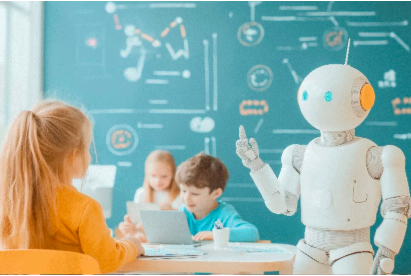Educational technology (EdTech) is transforming how students learn, engage with content, and achieve academic success. From digital tools that support real-time feedback to platforms that personalize instruction, EdTech has become an integral part of the modern learning environment. When thoughtfully integrated into classrooms, it can enhance student performance in several meaningful ways.
1. Personalized Learning Paths
One of the strongest advantages of EdTech is its ability to tailor learning experiences to individual needs. Students no longer have to rely solely on a one-size-fits-all model. With platforms that adapt to each learner’s pace and understanding, students can progress through lessons based on their skill level. This personalized approach helps build confidence and encourages mastery of subjects.
2. Immediate Feedback and Assessment
Digital tools allow for quick assessments and timely feedback. Whether it’s a quiz at the end of a lesson or real-time tracking of progress, students can identify their strengths and areas for improvement without delay. Teachers, too, benefit from data that helps guide instruction and provide targeted support where needed.
3. Improved Engagement and Motivation
Interactive features such as educational games, simulations, and videos often lead to greater student engagement. These elements make learning more dynamic and enjoyable, which can increase participation and motivation. When students are interested in what they’re learning, they are more likely to stay focused and perform well academically.
4. Better Access to Learning Resources
EdTech expands access to a wide range of resources, including e-books, visual aids, online labs, and collaborative tools. This access supports a deeper understanding of complex topics and provides opportunities for independent exploration beyond the classroom. For students in remote or under-resourced areas, technology can help bridge gaps in educational opportunities.
5. Enhanced Collaboration and Communication
Many digital platforms foster collaboration through shared documents, discussion boards, and virtual group projects. These tools promote communication skills and teamwork—important skills both inside and outside the classroom. Collaborative learning also helps students engage more deeply with content by learning from peers.
6. Tracking Progress Over Time
With built-in analytics, educators can monitor how students perform over time. This insight helps in adjusting instruction to better suit learners’ needs and ensures that no student is left behind. Long-term tracking also assists in setting goals and recognizing achievements, boosting student morale.
Conclusion
The thoughtful use of EdTech can lead to notable improvements in student performance. While technology alone isn’t a substitute for effective teaching, it serves as a powerful supplement that can enrich learning experiences. By promoting personalized learning, engagement, accessibility, and collaboration, EdTech continues to play a vital role in shaping the future of education.














